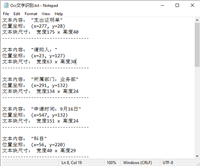引言
在python编程中,函数是组织代码和实现功能的基本单元。传统的函数设计通常返回单个值,但在实际开发中,我们经常需要从函数中返回多个相关数据。python通过灵活的返回值机制,提供了多种优雅的方式来实现这一需求。掌握这些技巧不仅能提高代码的简洁性和可读性,还能显著增强函数的实用价值和复用能力。
python中返回多个值的能力源于其动态类型系统和丰富的内置数据结构。从简单的元组打包到高级的数据类,python为开发者提供了一系列渐进式的解决方案。本文将深入探讨各种返回多个值的方法,从基础语法到高级应用,为开发者提供全面的技术指南。
在现代python编程中,返回多个值的函数设计模式已被广泛应用于数据处理、api开发、科学计算等众多领域。通过合理运用这些技术,开发者可以编写出更加表达力强和维护性好的代码。本文将基于python cookbook的理念,结合最新python特性,全面解析这一重要主题。
一、基础返回方法
1.1 使用元组返回多个值
元组是python中最常用的返回多个值的方式。其优势在于语法简洁、性能高效,且支持自动解包。
def calculate_statistics(numbers):
"""计算一组数字的统计指标"""
total = sum(numbers)
count = len(numbers)
average = total / count if count > 0 else 0
maximum = max(numbers) if numbers else 0
minimum = min(numbers) if numbers else 0
# 返回多个值作为元组
return total, count, average, maximum, minimum
# 调用函数并解包返回值
data = [10, 20, 30, 40, 50]
total, count, avg, max_val, min_val = calculate_statistics(data)
print(f"总和: {total}, 数量: {count}, 平均值: {avg:.2f}")
print(f"最大值: {max_val}, 最小值: {min_val}")
# 也可以直接接收元组
result = calculate_statistics(data)
print(f"完整结果: {result}") # 输出: (150, 5, 30.0, 50, 10)元组返回的关键优势在于其不可变性,这保证了返回数据的安全性和一致性。当函数返回的多个值在逻辑上属于一个整体,且不需要修改时,元组是最佳选择。
1.2 使用列表返回多个值
当需要返回可变集合或顺序重要的数据时,列表是更好的选择。列表允许返回后对数据进行修改。
def process_data_points(raw_data):
"""处理数据点,返回多个列表"""
valid_data = [x for x in raw_data if x is not none]
outliers = [x for x in raw_data if x is not none and (x < 0 or x > 100)]
normalized_data = [(x - min(valid_data)) / (max(valid_data) - min(valid_data))
for x in valid_data] if valid_data else []
# 返回多个列表
return valid_data, outliers, normalized_data
# 使用示例
input_data = [5, 15, none, 25, 35, 105, 45]
valid, outliers, normalized = process_data_points(input_data)
print(f"有效数据: {valid}") # 输出: [5, 15, 25, 35, 105, 45]
print(f"异常值: {outliers}") # 输出: [105]
print(f"归一化数据: {normalized}")
# 列表返回的值可以修改
valid.append(55)
print(f"修改后有效数据: {valid}")列表返回特别适用于需要后续处理或动态扩展的场景。与元组相比,列表提供了更大的灵活性。
1.3 使用字典返回多个值
当返回的值需要明确的标签或键值映射时,字典是最合适的结构。字典极大地提高了代码的可读性和自文档化程度。
def analyze_text(text):
"""分析文本特征,返回多个统计指标"""
if not text:
return {}
words = text.split()
characters = len(text)
sentences = text.count('.') + text.count('!') + text.count('?')
unique_words = len(set(words))
# 返回字典,每个值都有明确的标签
return {
'word_count': len(words),
'character_count': characters,
'sentence_count': sentences,
'unique_words': unique_words,
'average_word_length': characters / len(words) if words else 0,
'most_common_word': max(set(words), key=words.count) if words else none
}
# 使用示例
sample_text = "python是一种强大的编程语言。python易于学习且功能强大!"
stats = analyze_text(sample_text)
print("文本分析结果:")
for key, value in stats.items():
print(f"{key}: {value}")
# 直接访问特定值
print(f"单词数量: {stats['word_count']}")
print(f"平均单词长度: {stats['average_word_length']:.2f}")字典返回使代码更易理解,因为每个值的含义通过键名变得明确。这在团队开发和api设计中特别有价值。
二、高级返回技术
2.1 使用命名元组(namedtuple)
命名元组结合了元组的轻量级特性和字典的可读性优势,是返回多个值的理想选择。
from collections import namedtuple
# 定义命名元组类型
statistics = namedtuple('statistics', ['total', 'count', 'average', 'maximum', 'minimum'])
def calculate_detailed_stats(numbers):
"""计算详细统计信息"""
if not numbers:
return statistics(0, 0, 0, 0, 0)
total = sum(numbers)
count = len(numbers)
average = total / count
maximum = max(numbers)
minimum = min(numbers)
return statistics(total, count, average, maximum, minimum)
# 使用示例
data = [10, 20, 30, 40, 50]
stats = calculate_detailed_stats(data)
# 通过属性名访问值,代码可读性极高
print(f"总和: {stats.total}")
print(f"平均值: {stats.average:.2f}")
print(f"数据范围: {stats.minimum} - {stats.maximum}")
# 命名元组仍然支持元组的所有操作
print(f"前两个值: {stats[0]}, {stats[1]}")
# 转换为字典
print(f"字典形式: {stats._asdict()}")命名元组提供了最好的两个世界:像元组一样高效,像类一样可读。对于需要返回固定结构数据的函数,这是推荐的方法。
2.2 使用数据类(data class)
python 3.7引入的数据类提供了更现代、更强大的返回多个值的方式,特别适合复杂数据结构。
from dataclasses import dataclass
from typing import list, optional
@dataclass
class analysisresult:
"""数据分析结果类"""
valid_count: int
invalid_count: int
average_value: float
values_above_threshold: list[float]
warning_message: optional[str] = none # 可选字段
def summary(self):
"""生成结果摘要"""
return f"有效数据: {self.valid_count}, 平均值: {self.average_value:.2f}"
def analyze_dataset(data, threshold=50):
"""分析数据集"""
valid_data = [x for x in data if x is not none and x >= 0]
invalid_count = len(data) - len(valid_data)
if not valid_data:
return analysisresult(0, invalid_count, 0, [], "无有效数据")
average = sum(valid_data) / len(valid_data)
above_threshold = [x for x in valid_data if x > threshold]
warning = none
if invalid_count > len(valid_data):
warning = "无效数据过多"
return analysisresult(
valid_count=len(valid_data),
invalid_count=invalid_count,
average_value=average,
values_above_threshold=above_threshold,
warning_message=warning
)
# 使用示例
dataset = [10, 25, none, 60, 75, -5, 45]
result = analyze_dataset(dataset, threshold=30)
print(result) # 自动生成的有用表示
print(result.summary())
print(f"超过阈值的值: {result.values_above_threshold}")
if result.warning_message:
print(f"警告: {result.warning_message}")数据类提供了类型提示、默认值、自动方法生成等高级特性,使代码更加健壮和可维护。
2.3 使用自定义类
对于最复杂的场景,自定义类提供了完全的灵活性和控制力。
class financialreport:
"""财务报告类"""
def __init__(self, revenue, expenses, period):
self.revenue = revenue
self.expenses = expenses
self.period = period
self.profit = revenue - expenses
self.margin = self.profit / revenue if revenue > 0 else 0
def get_summary(self):
"""获取报告摘要"""
return {
'period': self.period,
'revenue': self.revenue,
'expenses': self.expenses,
'profit': self.profit,
'margin': f"{self.margin:.1%}"
}
def is_profitable(self):
"""判断是否盈利"""
return self.profit > 0
def __str__(self):
return (f"财务报告({self.period}): "
f"收入¥{self.revenue:,}, 利润¥{self.profit:,}, "
f"利润率{self.margin:.1%}")
def generate_quarterly_report(sales_data, cost_data, quarter):
"""生成季度财务报告"""
total_revenue = sum(sales_data)
total_expenses = sum(cost_data)
return financialreport(total_revenue, total_expenses, quarter)
# 使用示例
q1_sales = [100000, 120000, 110000]
q1_costs = [80000, 85000, 90000]
report = generate_quarterly_report(q1_sales, q1_costs, "2024-q1")
print(report)
print(f"是否盈利: {report.is_profitable()}")
print("摘要信息:", report.get_summary())自定义类允许封装复杂逻辑和业务规则,提供最丰富的语义表达和能力扩展。
三、实战应用场景
3.1 数据处理与分析
在数据科学领域,函数经常需要返回多个相关指标和处理结果。
from typing import tuple, dict, any
import statistics
def comprehensive_data_analysis(data: list[float]) -> dict[str, any]:
"""执行综合数据分析"""
if not data:
return {"error": "无有效数据"}
# 计算多个统计指标
cleaned_data = [x for x in data if x is not none]
n = len(cleaned_data)
if n == 0:
return {"error": "无有效数据点"}
results = {
'sample_size': n,
'mean': statistics.mean(cleaned_data),
'median': statistics.median(cleaned_data),
'std_dev': statistics.stdev(cleaned_data) if n > 1 else 0,
'variance': statistics.variance(cleaned_data) if n > 1 else 0,
'range': max(cleaned_data) - min(cleaned_data),
'q1': statistics.quantiles(cleaned_data, n=4)[0] if n >= 4 else none,
'q3': statistics.quantiles(cleaned_data, n=4)[2] if n >= 4 else none,
}
# 添加数据质量信息
results['original_size'] = len(data)
results['missing_count'] = len(data) - n
results['data_quality'] = f"{(n/len(data))*100:.1f}%" if data else "0%"
return results
# 使用示例
experimental_data = [23.5, 24.1, none, 22.8, 25.3, 23.9, none, 24.7]
analysis = comprehensive_data_analysis(experimental_data)
print("数据分析结果:")
for key, value in analysis.items():
if not key.startswith('_'): # 跳过内部键
print(f"{key}: {value}")这种返回方式使数据分析和报告生成变得极其高效,所有相关信息在一次函数调用中即可获得。
3.2 api响应处理
在web开发中,处理api响应通常需要返回状态信息、数据内容和元数据。
from typing import typeddict, optional
class apiresponse(typeddict):
"""api响应类型定义"""
success: bool
data: optional[dict]
message: str
status_code: int
timestamp: str
def process_api_request(endpoint: str, payload: dict) -> apiresponse:
"""处理api请求并返回多个信息"""
import time
from datetime import datetime
try:
# 模拟api调用
if endpoint == "/users":
# 模拟成功响应
response_data = {
'users': [{'id': 1, 'name': 'alice'}, {'id': 2, 'name': 'bob'}],
'total_count': 2
}
return {
'success': true,
'data': response_data,
'message': '数据获取成功',
'status_code': 200,
'timestamp': datetime.now().isoformat()
}
else:
# 模拟错误响应
return {
'success': false,
'data': none,
'message': f'端点未找到: {endpoint}',
'status_code': 404,
'timestamp': datetime.now().isoformat()
}
except exception as e:
# 模拟异常处理
return {
'success': false,
'data': none,
'message': f'服务器错误: {str(e)}',
'status_code': 500,
'timestamp': datetime.now().isoformat()
}
# 使用示例
response = process_api_request("/users", {"page": 1})
if response['success']:
print("api调用成功!")
print(f"数据: {response['data']}")
print(f"时间: {response['timestamp']}")
else:
print(f"api调用失败: {response['message']}")
print(f"状态码: {response['status_code']}")这种结构化的返回方式使api错误处理和数据传递变得清晰和一致。
3.3 科学计算与工程应用
在科学和工程领域,函数经常需要返回计算结果、误差估计和收敛状态。
from dataclasses import dataclass
from typing import list, tuple
import math
@dataclass
class optimizationresult:
"""优化算法结果"""
solution: list[float]
objective_value: float
iterations: int
converged: bool
error_message: str = ""
history: list[float] = none
def __post_init__(self):
if self.history is none:
self.history = []
def gradient_descent(objective_function, initial_point, learning_rate=0.01, max_iters=1000):
"""梯度下降优化算法"""
current_point = initial_point[:]
history = [objective_function(current_point)]
converged = false
for i in range(max_iters):
# 模拟梯度计算和更新
gradient = [x * 0.01 for x in current_point] # 简化梯度计算
new_point = [current_point[j] - learning_rate * gradient[j]
for j in range(len(current_point))]
current_point = new_point
current_value = objective_function(current_point)
history.append(current_value)
# 检查收敛
if i > 0 and abs(history[-1] - history[-2]) < 1e-6:
converged = true
break
return optimizationresult(
solution=current_point,
objective_value=objective_function(current_point),
iterations=i + 1,
converged=converged,
history=history
)
# 使用示例
def sphere_function(x):
"""球面测试函数"""
return sum(xi**2 for xi in x)
result = gradient_descent(sphere_function, [2.0, -2.0, 1.5])
print(f"最优解: {result.solution}")
print(f"目标函数值: {result.objective_value:.6f}")
print(f"迭代次数: {result.iterations}")
print(f"是否收敛: {result.converged}")
print(f"最终误差: {abs(result.objective_value):.2e}")这种详细的返回结构对于算法调试和性能分析至关重要。
四、高级技巧与最佳实践
4.1 错误处理与边界情况
返回多个值时,需要特别注意错误处理和边界情况,确保返回结构的一致性。
from typing import union, tuple
import sys
def safe_divide(a: float, b: float) -> tuple[bool, union[float, str]]:
"""安全除法运算,返回成功状态和结果"""
try:
if b == 0:
return false, "除数不能为零"
result = a / b
return true, result
except typeerror as e:
return false, f"类型错误: {str(e)}"
except exception as e:
return false, f"意外错误: {str(e)}"
def robust_statistical_calculation(data: list[float]) -> dict[str, union[float, str, none]]:
"""健壮的统计计算,处理各种边界情况"""
if not data:
return {'error': '数据为空', 'result': none}
valid_data = [x for x in data if isinstance(x, (int, float)) and not math.isnan(x)]
if not valid_data:
return {'error': '无有效数值数据', 'result': none}
if len(valid_data) == 1:
return {
'result': valid_data[0],
'warning': '数据点不足,无法计算标准差',
'mean': valid_data[0],
'std_dev': none
}
try:
mean = statistics.mean(valid_data)
std_dev = statistics.stdev(valid_data)
return {
'result': mean,
'mean': mean,
'std_dev': std_dev,
'sample_size': len(valid_data),
'confidence_interval': (
mean - 1.96 * std_dev / math.sqrt(len(valid_data)),
mean + 1.96 * std_dev / math.sqrt(len(valid_data))
)
}
except exception as e:
return {'error': f'计算失败: {str(e)}', 'result': none}
# 使用示例
success, result = safe_divide(10, 2)
if success:
print(f"除法结果: {result}")
else:
print(f"错误: {result}")
stats = robust_statistical_calculation([1, 2, 3, "invalid", 4, 5])
print(f"统计结果: {stats}")良好的错误处理使函数更加健壮和用户友好。
4.2 性能优化技巧
当返回大量数据或多个复杂对象时,需要考虑性能影响和内存使用。
from typing import generator
import memory_profiler
def large_data_processing_efficient(data: list[float]) -> tuple[list[float], dict[str, float]]:
"""高效处理大数据集,优化内存使用"""
# 使用生成器表达式减少内存占用
filtered_data = (x for x in data if x is not none and x > 0)
# 转换为列表并计算统计量
valid_data = list(filtered_data)
# 分批处理大型数据集
batch_size = 1000
statistics = {}
for i in range(0, len(valid_data), batch_size):
batch = valid_data[i:i + batch_size]
batch_stats = {
'batch_mean': sum(batch) / len(batch),
'batch_size': len(batch)
}
statistics[f'batch_{i//batch_size}'] = batch_stats
# 只返回必要的汇总数据
summary = {
'total_processed': len(valid_data),
'overall_mean': sum(valid_data) / len(valid_data) if valid_data else 0,
'batches_processed': len(statistics)
}
return valid_data, summary
def memory_efficient_analysis(large_dataset: list[float]) -> generator[dict[str, float], none, none]:
"""内存高效的分析函数,使用生成器返回结果"""
current_batch = []
for value in large_dataset:
current_batch.append(value)
# 每处理1000个值 yield一次结果
if len(current_batch) >= 1000:
batch_result = {
'mean': sum(current_batch) / len(current_batch),
'min': min(current_batch),
'max': max(current_batch),
'count': len(current_batch)
}
yield batch_result
current_batch = [] # 重置批次
# 处理剩余数据
if current_batch:
final_result = {
'mean': sum(current_batch) / len(current_batch),
'min': min(current_batch),
'max': max(current_batch),
'count': len(current_batch)
}
yield final_result
# 使用示例
large_data = [float(x) for x in range(10000)]
processed, summary = large_data_processing_efficient(large_data)
print(f"处理了 {summary['total_processed']} 个数据点")
print(f"总体均值: {summary['overall_mean']:.2f}")
# 使用生成器版本节省内存
print("分批处理结果:")
for i, batch_result in enumerate(memory_efficient_analysis(large_data)):
if i < 3: # 只显示前3批避免输出过长
print(f"批次 {i}: {batch_result}")性能优化确保函数在处理大规模数据时仍然保持高效。
4.3 类型提示与文档化
使用现代python类型提示可以大大提高代码的可读性和可维护性。
from typing import typeddict, list, optional, tuple
from dataclasses import dataclass
class calculationresult(typeddict):
"""计算结果类型定义"""
value: float
precision: float
units: str
is_estimated: bool
confidence_interval: tuple[float, float]
@dataclass
class experimentalmeasurement:
"""实验测量结果"""
measured_value: float
uncertainty: float
instrument_id: str
timestamp: str
conditions: dict[str, any]
quality_rating: int
def to_dict(self) -> dict[str, any]:
"""转换为字典格式"""
return {
'value': self.measured_value,
'uncertainty': self.uncertainty,
'quality': self.quality_rating,
'conditions': self.conditions
}
def calculate_physical_quantity(
inputs: list[float],
method: str = "standard"
) -> calculationresult:
"""
计算物理量,返回详细结果
args:
inputs: 输入数据列表
method: 计算方法("standard" 或 "precise")
returns:
calculationresult: 包含计算结果和元数据的字典
raises:
valueerror: 当输入数据无效时
"""
if not inputs or any(math.isnan(x) for x in inputs):
raise valueerror("输入数据无效")
if method == "standard":
value = statistics.mean(inputs)
precision = statistics.stdev(inputs) if len(inputs) > 1 else 0.0
else: # precise method
value = statistics.mean(inputs)
precision = statistics.stdev(inputs) / math.sqrt(len(inputs)) if len(inputs) > 1 else 0.0
# 计算置信区间
n = len(inputs)
if n > 1 and precision > 0:
interval = (
value - 1.96 * precision,
value + 1.96 * precision
)
else:
interval = (value, value)
return {
'value': value,
'precision': precision,
'units': 'meters',
'is_estimated': n < 30,
'confidence_interval': interval
}
# 使用示例
try:
measurements = [1.23, 1.25, 1.22, 1.24, 1.26]
result = calculate_physical_quantity(measurements, "precise")
print(f"测量结果: {result['value']:.3f} ± {result['precision']:.3f} {result['units']}")
print(f"置信区间: {result['confidence_interval']}")
print(f"是否为估计值: {result['is_estimated']}")
except valueerror as e:
print(f"计算错误: {e}")完整的类型提示和文档使代码自描述且易于使用。
总结
python中返回多个值的能力是语言灵活性和表达力的重要体现。通过本文的全面探讨,我们了解了从基础元组打包到高级数据类的各种方法,以及它们在实际应用中的最佳实践。
关键要点回顾
选择合适的数据结构:根据返回数据的性质和用途选择最合适的结构
- 元组:简单、高效,适合返回临时性、不需要修改的数据
- 列表:可变,适合需要后续处理的数据集合
- 字典:键值对,提供最好的可读性和自文档化
- 命名元组和数据类:结合效率与可读性,适合复杂数据结构
考虑使用场景:不同的应用场景需要不同的返回策略
- 数据处理:返回清理后的数据和质量指标
- api开发:返回状态码、数据和元信息
- 科学计算:返回结果、误差估计和收敛状态
注重代码质量:通过类型提示、文档字符串和错误处理提高代码健壮性
- 使用类型提示提高代码可读性和ide支持
- 提供完整的文档字符串说明返回值含义
- 实现健壮的错误处理应对边界情况
实践建议
在实际项目中,建议根据以下原则选择返回多个值的方法:
- 简单临时数据:使用元组或基本解包
- 结构化数据:使用命名元组或数据类
- 动态或可变数据:使用字典或列表
- 复杂业务对象:使用自定义类
同时,始终考虑性能影响和内存使用,特别是在处理大型数据集时。使用生成器和分批处理可以显著降低内存占用。
未来展望
随着python语言的不断发展,返回多个值的方法也在进化。类型系统的增强、数据类的改进以及新的语言特性将继续丰富我们的工具箱。保持对新技术的学习和适应,将帮助我们编写出更加优雅和高效的代码。
通过掌握返回多个值的各种技巧,python开发者可以编写出更加简洁、可读和可维护的代码,提高开发效率和代码质量。这些技能是现代python编程中不可或缺的重要组成部分。
到此这篇关于从基础到高级详解python函数返回多个值的完全指南的文章就介绍到这了,更多相关python函数返回多个值内容请搜索代码网以前的文章或继续浏览下面的相关文章希望大家以后多多支持代码网!







发表评论